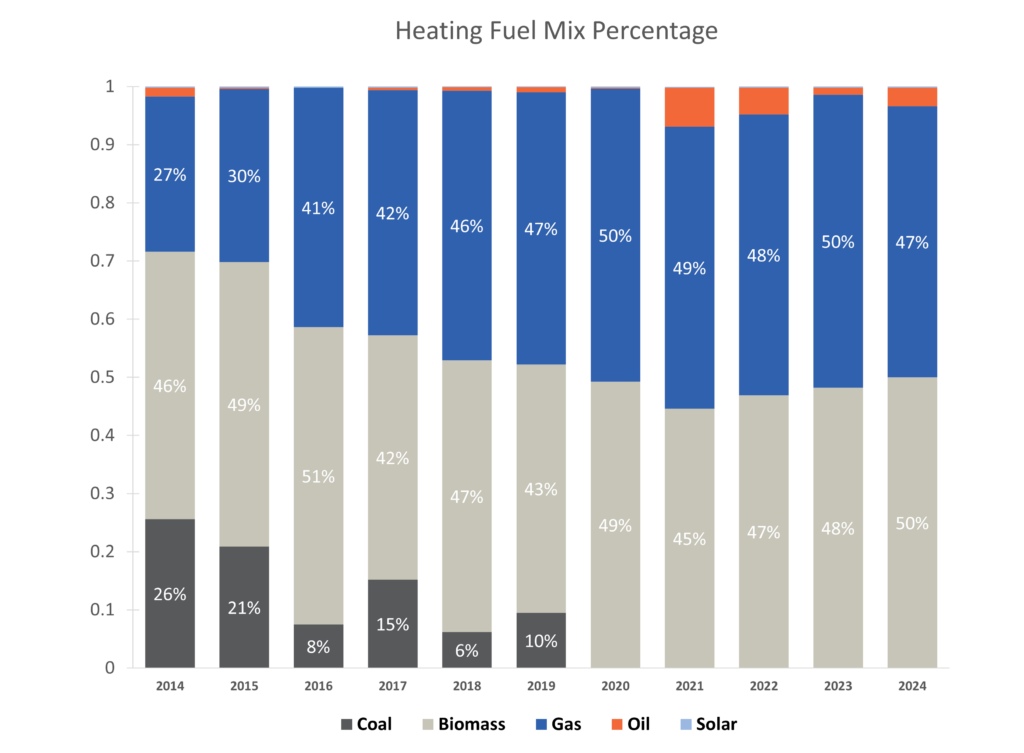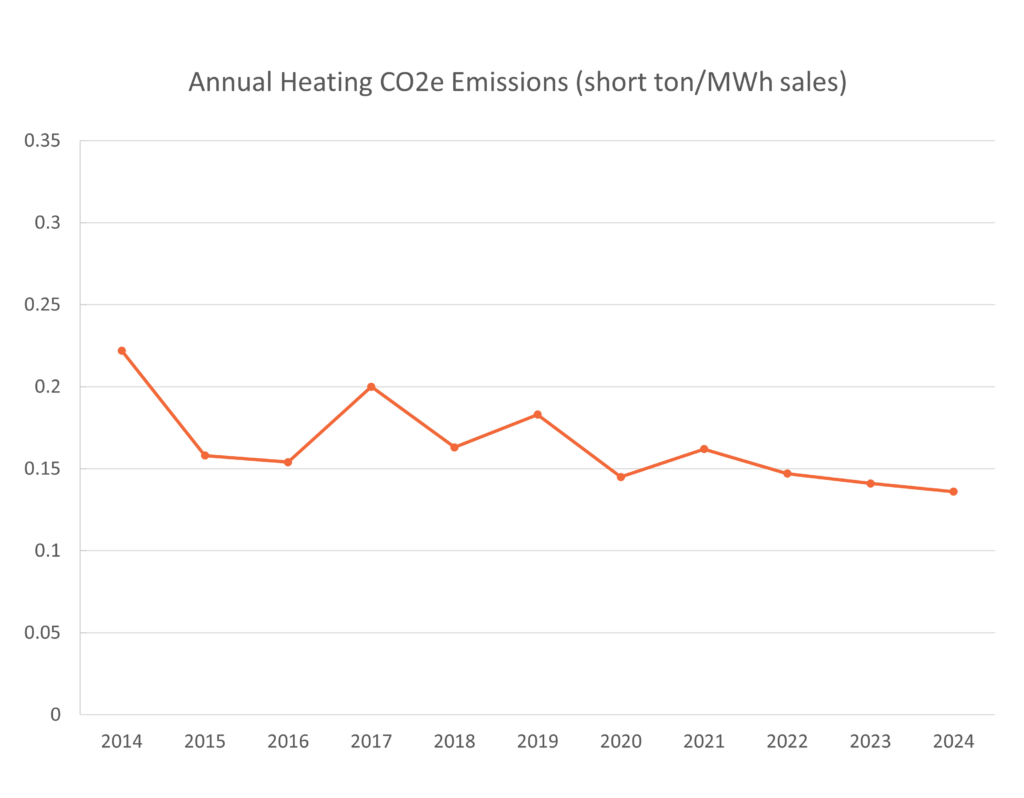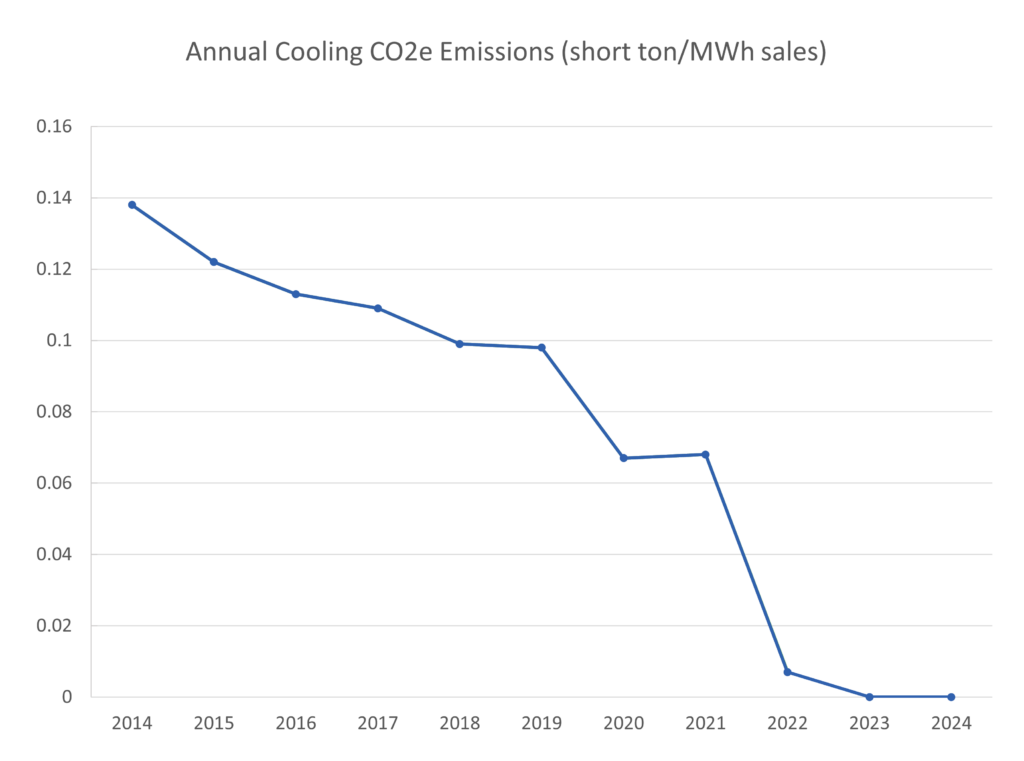We can support your environmental reporting. Emissions data is updated each spring, once data can be collected from all sources. If you need additional information, please contact the District Energy team at 651-297-8955, email info@districtenergy.com, or support request form.
Carbon Factor
District Energy provides its greenhouse gas profile as a carbon factor for operations, which represents the carbon intensity of the energy produced for heating and cooling. This metric makes it easy for customers to calculate their own carbon profile, as a product of District Energy’s carbon intensity and their building’s energy consumption.
| District Energy St. Paul Carbon Factors | |||||
| CO2e (short tons/MWhth) | |||||
| 2020 | 2021 | 2022 | 2023 | 2024 | |
| Heating Services | 0.145 | 0.162 | 0.147 | 0.141 | 0.136 |
| Cooling Services | 0.067 | 0.068 | 0.007 | 0 | 0 |
CO2e or carbon dioxide equivalent is a metric used to account for the emissions from various greenhouse gases including carbon dioxide, methane, nitrous oxide, and fluorinated gases based upon their global warming potential.
CO2e Emissions Scope 1
Scope 1 emissions are direct emissions related to fuels combusted on site. At District Energy this includes:
- Combustion of natural gas, woody biomass, and fuel oil in boilers to produce hot water. Fuel oil is utilized as the backup fuel for a small portion of the load during natural gas curtailments.
- Combustion of gasoline and diesel in company-owned fleet vehicles and mobile equipment. In instances where fuel consumed by a fleet vehicle was not known, mileage for the year and information from the EPA’s fueleconomy.gov is used to estimate consumption.
- Combustion of woody biomass is considered carbon neutral by the EPA since burning wood produces biogenic emissions that are part of the carbon cycle as opposed to fossil fuel emissions which increase the overall carbon in the natural system.
Up to 50% of the current annual heat production comes from renewable, urban tree waste and solar thermal. Tree waste sources in the Twin Cities metro area include storm and disease damaged trees such as EAB, tree trimmings, and habitat restoration.
EPA November 2015 CO2 Emission factors were used in calculations for Scope 1 emissions.
CO2e Emissions Scope 2
Scope 2 emissions are indirect emissions related to fuels combusted off site. At District Energy this includes electricity purchased from Xcel Energy to produce chilled water, distribute hot water, and operate the plant and offices.
Starting in 2021, renewable energy credits (RECs) are retired by District Energy to offset emissions from electrical use for the heating and cooling systems. Xcel Energy produces renewable electricity for their Minnesota customers and has the quantity certified by a third party resulting in their Certified Renewable Percentage. District Energy purchases RECs from projects in Minnesota and Wisconsin to cover the remainder of the electricity purchased, resulting in carbon-neutral cooling services for our cooling customers.
| District Energy Fuel Mix % | |||||
| 2020 | 2021 | 2022 | 2023 | 2024 | |
| Biomass | 49.20% | 44.60% | 46.90% | 48.20% | 50.00% |
| Natural Gas | 50.40% | 48.50% | 48.30% | 50.40% | 47.00% |
| Oil | 0.20% | 6.70% | 4.60% | 1.20% | 3.00% |
| Solar | 0.20% | 0.20% | 0.20% | 0.20% | 0.20% |
Heating Fuel Mix Percentage

Annual Heating CO2e Emissions (short ton/MWh sales)

